The Ultimate Guide to Customer Retention for Business Growth
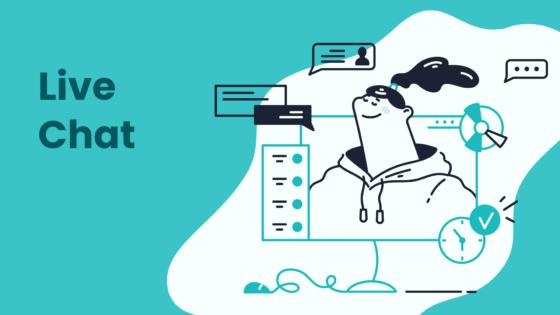
Customer retention is the backbone of sustainable business growth. Why? Because keeping your customers happy and loyal costs less than finding new ones. In fact, acquiring a new customer can cost five times more than retaining an existing one. When you focus on retention, you’re not just saving money—you’re boosting profits. Studies show that a 5% increase in customer retention can lead to a profit jump of up to 75%. Plus, loyal customers tend to buy more, spend 67% more than new ones, and often recommend your business to others. That’s a win for both your revenue and your brand reputation.
So, what are customer retention strategies, and how can they help your business grow? Let’s dive in and explore how brands like Sobot use these strategies to foster loyalty and drive growth.
What Are Customer Retention Strategies and Why Are They Crucial?
Definition of Customer Retention
Customer retention refers to the ability of a business to keep its customers coming back over time. It’s not just about making a sale; it’s about building a relationship that encourages loyalty and repeat purchases. Think of it as creating a journey where your customers feel valued and supported at every step. Retention strategies focus on ensuring that once someone chooses your brand, they stick with you for the long haul.
But why does this matter? Because retaining customers is far more cost-effective than acquiring new ones. Plus, loyal customers often become your biggest advocates, spreading the word about your business and bringing in new customers organically.
Benefits of Customer Retention for Business Growth
Investing in customer retention strategies can transform your business. Here’s how:
- Cost Savings: Keeping customers is cheaper than finding new ones. Studies show that 82% of companies agree retention costs less than acquisition.
- Increased Revenue: Loyal customers spend more. In fact, a 5% increase in retention can boost profits by 25% to 95%.
- Better Brand Advocacy: Happy customers recommend your business to others. Around 70% of consumers are likely to recommend a brand after a positive experience.
- Higher Lifetime Value: Customers who stick around tend to spend more over time, increasing their lifetime value.
| Benefit | Description |
|---|---|
| Cost Savings | It is less expensive to keep customers than to find new ones. |
| Increased Lifetime Value | Loyal customers spend more in the long run. |
| Better Brand Advocacy | Happy customers recommend others. |
| Increased AOV | Loyal customers are 23% more likely to spend than average customers. |
| Increased Profits | A 5% increase in customer retention can boost profits by 25% to 95%. |
When you focus on retaining customers, you’re not just improving your bottom line. You’re also creating a community of loyal advocates who trust your brand.
Common Challenges in Retaining Customers
While customer retention is essential, it’s not always easy. Businesses face several hurdles when trying to keep their customers loyal:
- Lack of Engagement: About 25% of customers leave because they feel ignored or undervalued. Regular communication and personalized interactions can help solve this.
- Failure to Show Value: Customers might not see the value in your product or service. Clearly communicating how your offerings solve their problems can make a big difference.
- Ineffective Feedback Implementation: Many companies struggle to act on customer feedback. Without a proper system in place, it’s hard to address concerns and improve satisfaction.
- High Churn Rates: Companies with high churn rates often find it challenging to maximize customer lifetime value (CLV).
| Metric | Description |
|---|---|
| Retention Rate | Measures the percentage of customers who continue to do business with a company over a period. |
| Churn Rate | Indicates the percentage of customers who stop using a service during a given timeframe. |
| Lifetime Value (LTV) | Represents the total revenue a business can expect from a single customer account. |
| Net Promoter Score | Gauges customer loyalty and satisfaction based on their likelihood to recommend the service. |
Retention isn’t just about keeping customers; it’s about creating a seamless journey that makes them want to stay. By addressing these challenges, you can build stronger relationships and foster long-term loyalty.
Personalization: A Cornerstone of Effective Customer Retention
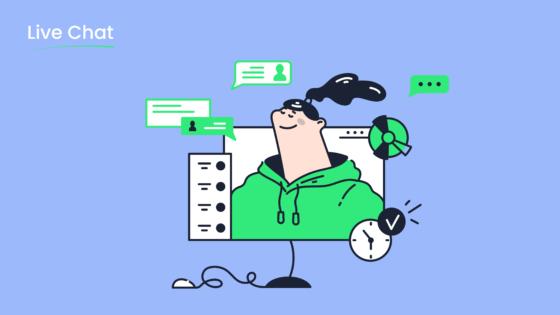
Leveraging Data to Understand Customer Needs
Understanding your customers starts with data. By analyzing customer behavior, preferences, and feedback, you can uncover what truly matters to them. Companies that excel in customer service often outperform their competitors by 89% on the S&P index through interaction analysis. This shows how data-driven insights can transform your customer experience.
For example, 75% of businesses plan to improve their data analytics initiatives in 2024. Why? Because leveraging data helps you predict customer needs and deliver personalized interactions that make them feel valued. When customers feel understood, they’re more likely to stay loyal.
| Statistic | Source |
|---|---|
| 62% of business leaders say personalization improves customer retention | Twilio/Segment |
| 76% of customers say personalized messages are crucial for brand consideration | McKinsey |
| 56% of online customers return to websites offering product recommendations | Invesp |
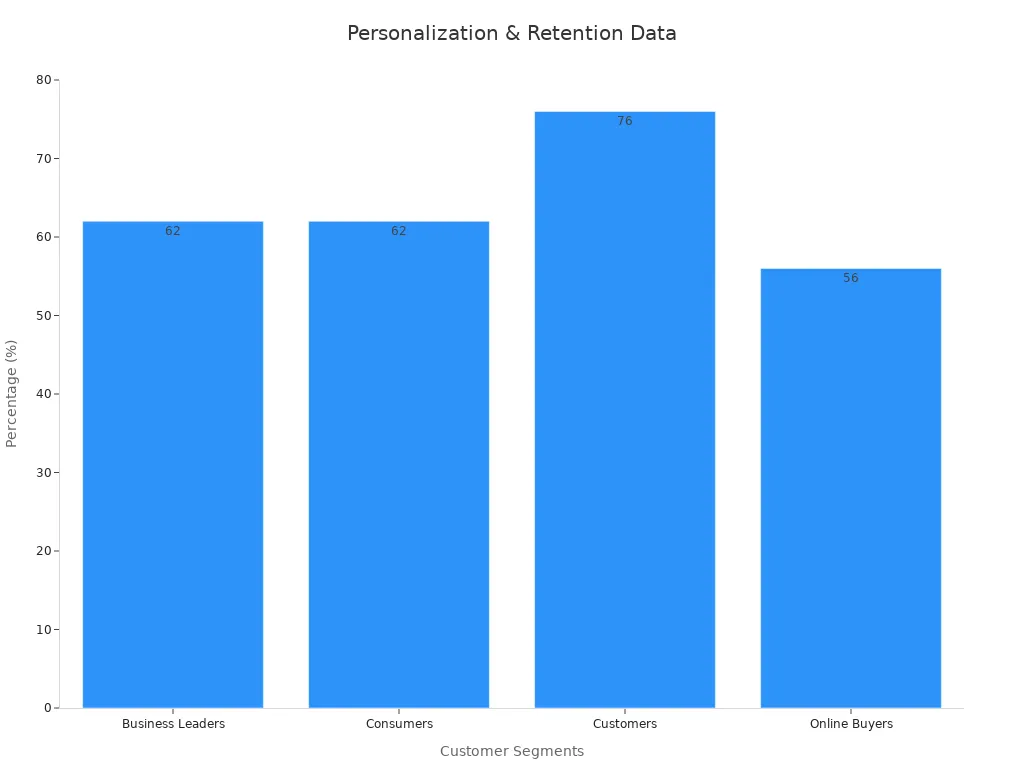
Tailoring Communication and Services for Individual Customers
Personalized communication is the secret sauce for customer engagement. When you tailor messages and services to individual preferences, customers feel like you truly understand them. For instance, targeted marketing campaigns based on customer behavior or follow-ups after purchases can keep customers engaged and loyal.
| Method | Description | Effectiveness |
|---|---|---|
| Message Targeting | Customizes messages to shared characteristics of population subgroups. | Efficient for reaching specific groups with common barriers or needs. |
| Message Tailoring | Fits messages to individual characteristics, such as personality factors. | More effective for influencing individual health behaviors and preferences. |
Retention KPIs like churn rate and Net Promoter Score (NPS) validate the effectiveness of personalized strategies. Automated emails, tailored offers, and proactive follow-ups are simple ways to show customers you care. When you prioritize personalization, you’re not just improving their experience—you’re building trust and loyalty.
How Sobot Live Chat Enhances Personalization
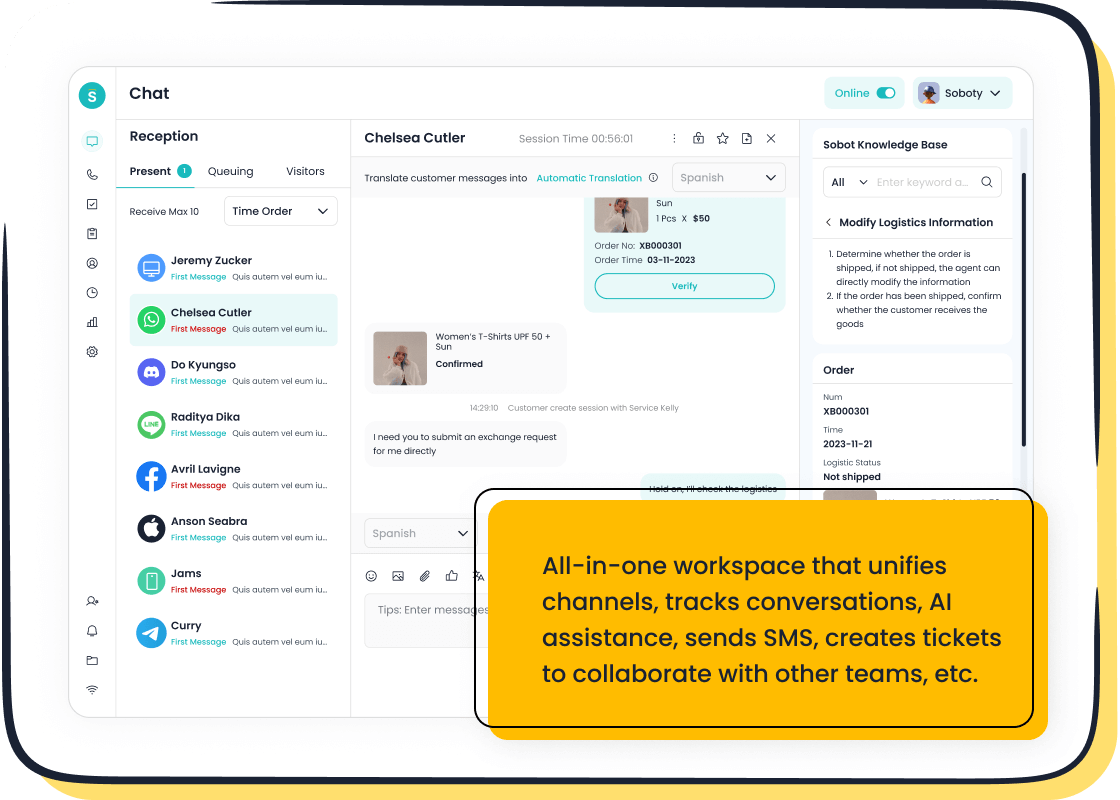
Sobot Live Chat takes personalization to the next level. It uses AI-powered tools to segment customers and deliver tailored services across multiple channels like WhatsApp, Instagram, and Telegram. With features like auto-translation and rich messaging, you can communicate with customers in their preferred language and style.
The platform’s built-in analytics evaluates over 150 indicators, helping you understand customer needs and optimize your approach. For example, Sobot Live Chat’s precise profiling has led to a 38% gain in conversion rates. It also keeps all conversations in one place, ensuring seamless customer interactions that foster loyalty.
| Metric | Description | Impact on Customer Retention |
|---|---|---|
| Resolution Rate (FCR) | Measures successful query resolution on first contact. | High FCR correlates with 22% higher retention rates. |
| Personalization Impact | Personalized experiences can boost conversion rates by up to 80%. | Enhances customer satisfaction and loyalty. |
When you use Sobot Live Chat, you’re not just improving customer service—you’re creating personalized experiences that keep customers coming back.
Delivering Exceptional Customer Service to Boost Retention
The Role of Omnichannel Support in Customer Retention
Your customers expect seamless interactions, no matter where they reach out. That’s where omnichannel support shines. It connects all communication channels—like email, social media, and live chat—into one unified system. This ensures your customers get consistent service, whether they’re messaging you on WhatsApp or chatting on your website.
Businesses with omnichannel strategies see impressive results. For example:
- Companies with strong omnichannel engagement retain 89% of their customers, compared to just 33% for those with weak strategies.
- Retailers using omnichannel approaches enhance brand experiences, which are critical for customer retention.
By adopting omnichannel support, you’re not just meeting expectations—you’re exceeding them. Tools like Sobot Live Chat make this easier by integrating multiple platforms into one workspace, ensuring no customer interaction slips through the cracks.
Proactive Customer Support Strategies
Waiting for customers to reach out isn’t enough anymore. Proactive support anticipates their needs and solves problems before they even ask. This approach builds trust and shows that you genuinely care about their experience.
Metrics like Customer Satisfaction Scores (CSAT) and Net Promoter Scores (NPS) highlight the benefits of proactive strategies. Companies that implement proactive support see a 15–20% increase in retention rates. Plus, addressing issues early reduces repeat calls, which account for 22% of unresolved problems.
Simple actions like sending follow-up emails or offering real-time assistance through live chat can make a big difference. When you’re proactive, you’re not just solving problems—you’re creating loyal customers who stick around.
Using Sobot Live Chat for Seamless Customer Interactions
Sobot Live Chat takes customer service to the next level. It offers instant communication across channels like Instagram, Telegram, and websites, ensuring your customers always feel heard. Features like proactive chat invitations let you address their needs before they even ask, reducing abandonment rates.
The platform’s real-time support fosters a sense of value among customers, boosting loyalty. For instance, Sobot Live Chat improves first answer rates by 49% and increases customer satisfaction rates to 75%. With its AI-powered tools and unified workspace, you can deliver personalized, efficient service that keeps customers coming back.
| Metric | Improvement |
|---|---|
| First Answer Rate | 49% |
| Conversion Rate | 6.8% |
| Customer Satisfaction Rate | 75% |
When you use Sobot Live Chat, you’re not just enhancing customer experience—you’re building lasting relationships.
Building Loyalty Through Customer Loyalty Programs
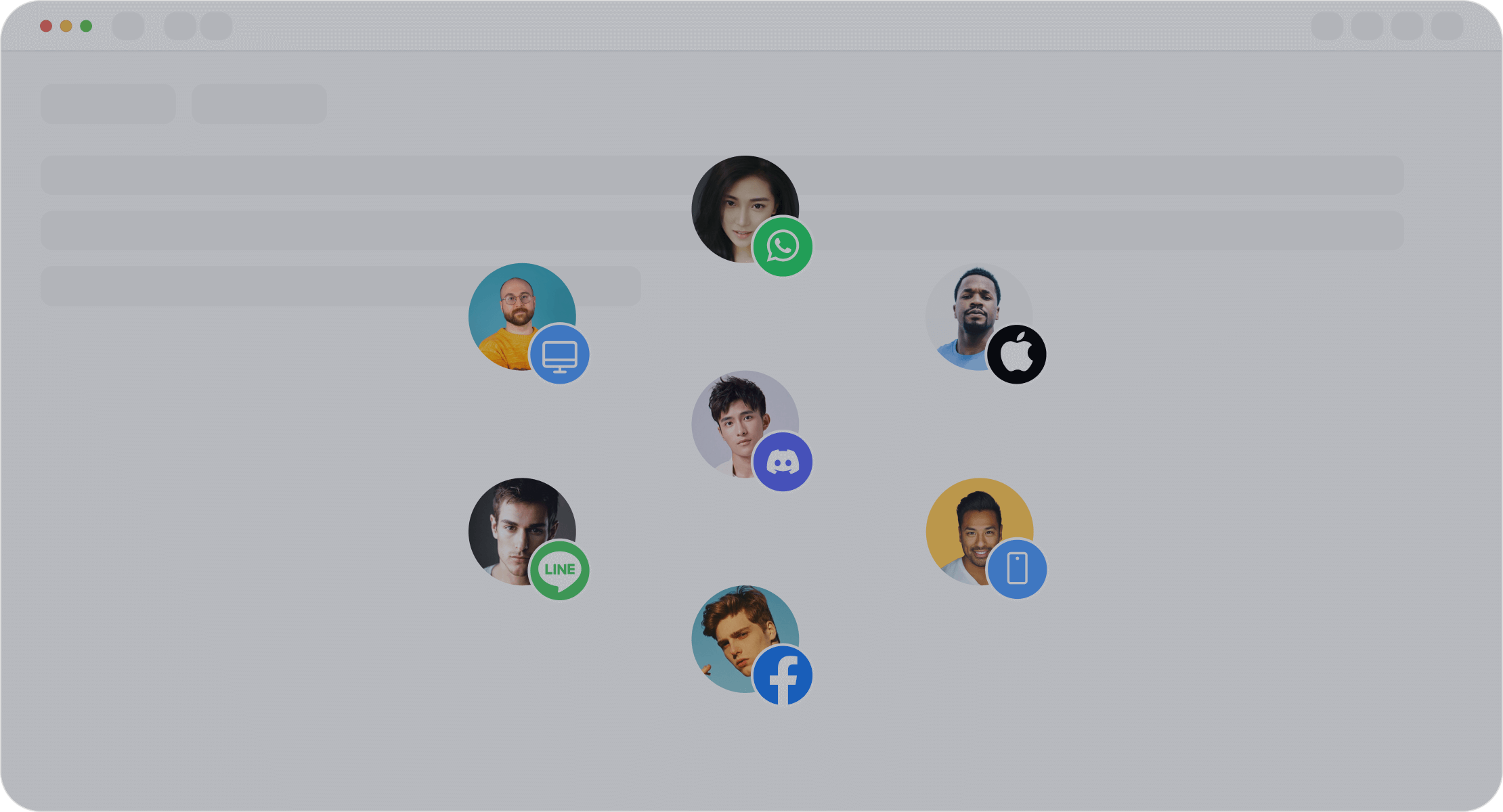
Customer loyalty programs are a powerful way to keep your customers coming back. They reward your loyal customers for their continued support, creating a win-win situation. You get repeat business, and they feel valued. Let’s explore how you can design programs that resonate, encourage repeat purchases, and learn from successful examples.
Designing Reward Programs That Resonate
A well-designed customer loyalty program goes beyond discounts. It creates an emotional connection with your customers. To make your program stand out, focus on these elements:
- Personalization: Tailor rewards to match customer preferences. For example, offer points for purchases or engagement activities like reviews or referrals.
- Flexibility: Let customers earn rewards in multiple ways, such as shopping, sharing on social media, or attending events.
- Exclusivity: Provide members-only perks like early access to sales or special events.
- Gamification: Add fun by introducing levels, badges, or leaderboards.
These features not only enhance customer engagement but also differentiate your brand in a crowded market.
Encouraging Repeat Purchases with Exclusive Perks
Exclusive perks are the secret sauce of loyalty programs. They make your customers feel special and encourage them to stick around. Did you know that 85% of consumers say loyalty programs make them more likely to continue shopping with a brand?
Here’s how you can use perks to boost repeat purchases:
- Offer free shipping or priority service to loyal customers.
- Create VIP tiers with increasing benefits, like discounts or free gifts.
- Use targeted offers to re-engage dormant customers.
| Statistic | Description |
|---|---|
| 85% | Consumers say loyalty programs make them more likely to continue shopping. |
| 73% | Consumers modify spending to maximize loyalty program benefits. |
| 3.1x | Members who redeem rewards spend 3.1 times more annually than non-members. |
When you provide perks that matter, you’re not just increasing sales—you’re building trust and loyalty.
Examples of Successful Loyalty Programs
Many brands have nailed the art of customer loyalty programs. Here are a few inspiring examples:
- A boutique retailer introduced a point system rewarding purchases and engagement. Customers earned points for shopping, writing reviews, and attending events. The program’s personalization and exclusivity led to higher retention rates and increased transaction values.
- IBM’s VIP Rewards program boosted partner engagement by 40%. It used gamification and leaderboards to make earning rewards fun.
- Lenovo’s LEAP program increased sales by 35% through its "Learn & Earn" and "Sell & Earn" initiatives.
| Program Name | Measurable Outcome | Key Features |
|---|---|---|
| IBM VIP Rewards | 40% increase in partner engagement | Gamification, points for activities, leaderboard |
| Lenovo LEAP Program | 35% boost in sales performance | Learn & Earn, Sell & Earn, incentivized product sales |
| Salesforce Partner Program | $6 return for every $1 of annual contract value | Performance-based tier structure, Trailblazer Score based on multiple pillars |
These examples show how creativity and customer focus can turn loyalty programs into a growth engine for your business.
Creating Emotional Connections and Community Around Your Brand
Fostering Engagement Through Social Media and Events
Building emotional connections starts with meaningful engagement strategies. Social media platforms offer a unique space for customers to share their experiences and interact with your brand. By fostering conversations, you create a loyal group of supporters who trust your brand and recommend it to others.
Here’s how you can use social media and events to strengthen your community:
- Encourage interaction with clear calls to action (CTAs) that spark conversations.
- Use interactive features like live Q&A sessions or webinars to connect in real time.
- Run contests and giveaways to excite your audience and boost participation.
- Promote user-generated content (UGC) to nurture trust and build a sense of belonging.
- Conduct polls and surveys to gather feedback and improve customer satisfaction.
Customers who engage with brands on social media spend 40% more and are three times more likely to recommend the brand. Regular interactions, whether online or through live events, create emotional bonds that enhance loyalty and advocacy.
“Positive interactions build emotional connections, turning customers into loyal advocates.”
The Power of Storytelling in Building Brand Loyalty
Storytelling is an effective engagement strategy that resonates deeply with customers. When you share your brand’s story, you’re not just selling a product—you’re creating an experience that aligns with their values.
Consider these compelling statistics:
| Statistic | Finding |
|-----------|---------|
| 75% of consumers | Believe it's important for brands to tell stories in their marketing |
| 71% of customers | Buy from companies whose values align with theirs |
| 86% of Americans | Want to buy from 'transparent' brands |
| 81% of customers | Need to trust a brand to buy from them |
| 55% of customers | Are more likely to consider buying from a brand if they like its story |
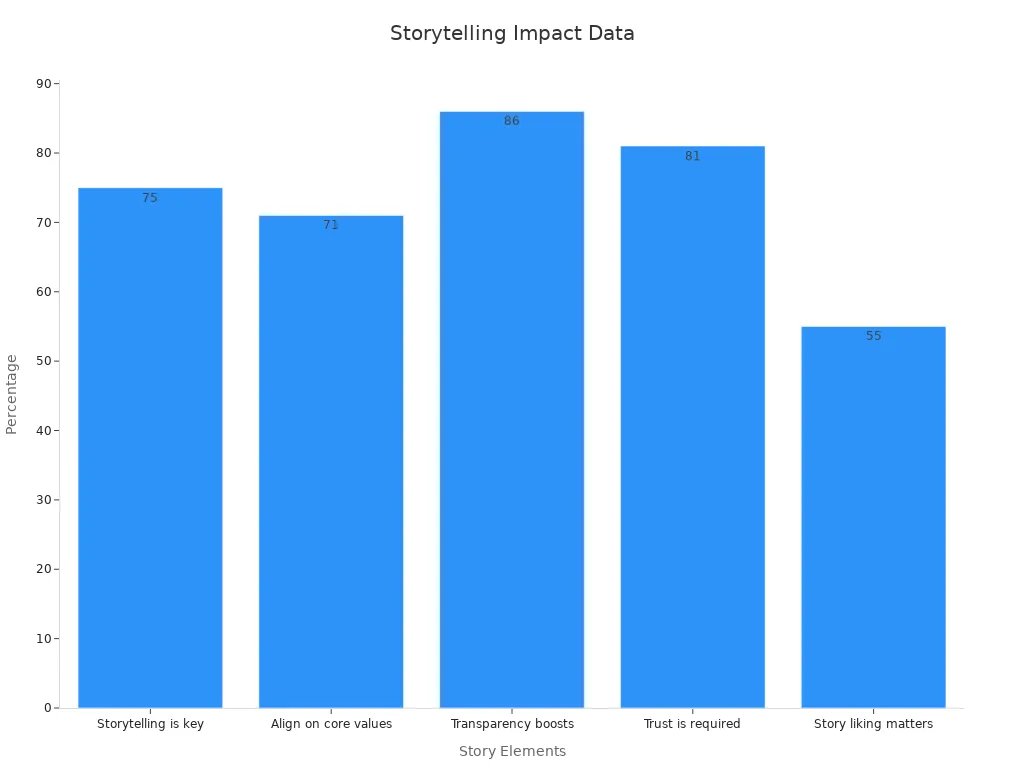
When you weave storytelling into your marketing, you create transparency and trust. Customers feel connected to your mission, making them more likely to stay loyal. For example, sharing how your brand supports sustainability or community initiatives can inspire deeper engagement.
How Sobot’s Marketing Solution Supports Community Building
Sobot’s Marketing Solution empowers businesses to create thriving communities around their brands. With tools for multichannel engagement, you can connect with customers through voice, WhatsApp, SMS, and more. The platform’s advanced dashboards track ROI and customer interactions, helping you measure the success of your community-building efforts.
Key metrics highlight its impact:
| Metric | Result |
|---------------------------------|-----------------------------|
| ROI Increase | 20% |
| New User Signups Increase | 31% |
| User Growth | 20% |
Sobot’s solution also encourages engagement strategies like personalized messaging and targeted offers. By reactivating dormant customers and rewarding loyal ones, you foster emotional connections that drive retention. With Sobot, you’re not just building a community—you’re creating lasting relationships that fuel growth.
Measuring the Success of Your Customer Retention Strategies
How do you know if your customer retention efforts are paying off? Measuring success isn’t just about gut feelings or assumptions. You need clear, actionable data to understand what’s working and what needs improvement. Let’s explore the key metrics, tools, and feedback strategies that can help you track and refine your retention game.
Key Metrics to Track (Retention Rate, Churn Rate, CLV)
Tracking the right metrics gives you a clear picture of how well your customer retention strategies are performing. Here are some of the most important ones to keep an eye on:
| Metric | Description |
|---|---|
| Customer Retention Rate | Percentage of customers who return after an initial purchase, indicating customer loyalty. |
| Churn Rate | Rate at which customers leave, calculated by dividing the number of lost customers by the total. |
| Repeat Purchase Rate | Measures how often customers return to make additional purchases, reflecting customer satisfaction. |
| Percentage of Revenue from New vs. Existing Customers | Compares revenue generated from new customers to that from existing ones, indicating growth potential. |
- Customer Retention Rate: This metric tells you how many customers stick with your brand over time. A high retention rate means you’re doing a great job keeping them happy and engaged.
- Churn Rate: Think of this as the flip side of retention. It shows how many customers you’re losing. A high churn rate is a red flag that something needs fixing.
- Customer Lifetime Value (CLV): This measures the total revenue you can expect from a single customer during their relationship with your business. The higher the CLV, the more valuable your customers are to your bottom line.
- Repeat Purchase Rate: This metric highlights how often customers come back to buy again. A high rate means they’re satisfied and trust your brand.
By focusing on these metrics, you can identify trends, spot issues, and make data-driven decisions to improve retention.
Tools for Measuring Retention Success
You can’t manage what you don’t measure. That’s why having the right tools is essential for tracking your retention efforts. Here are some tools that can help:
- Customer Relationship Management (CRM) Software: Platforms like Salesforce or HubSpot let you track customer interactions, purchase history, and engagement levels. They’re great for identifying patterns and opportunities to improve retention.
- Analytics Tools: Google Analytics and Mixpanel provide insights into customer behavior on your website or app. You can see where customers drop off and what keeps them coming back.
- Feedback Platforms: Tools like SurveyMonkey or Qualtrics help you gather and analyze customer feedback. Understanding their pain points and preferences is key to improving satisfaction.
- Sobot Live Chat: This tool goes beyond basic communication. It offers built-in analytics to evaluate over 150 indicators, helping you understand customer needs and optimize your approach. With features like real-time support and customer segmentation, it’s a powerful ally in your retention strategy.
Using these tools, you can monitor key metrics, identify areas for improvement, and ensure your retention strategies are on the right track.
Using Feedback to Continuously Improve Retention Efforts
Feedback is a goldmine for improving customer retention. When you listen to your customers, you gain valuable insights into what they love and what they’d like to see changed. Here’s how you can use feedback effectively:
- Ask the Right Questions: Use surveys, polls, or live chat to ask customers about their experiences. Questions like “What could we do better?” or “What do you love most about our service?” can reveal actionable insights.
- Act on Feedback: Don’t just collect feedback—use it. If customers mention slow response times, for example, consider implementing tools like Sobot Live Chat to speed up support.
- Close the Loop: Let customers know you’ve heard them. If you make changes based on their feedback, share the news. This builds trust and shows you value their input.
- Monitor Trends: Look for recurring themes in feedback. If multiple customers mention the same issue, it’s a sign that it needs your attention.
Pro Tip: Regularly review feedback to spot new opportunities for improvement. Even small changes can have a big impact on customer satisfaction and loyalty.
By combining feedback with the right metrics and tools, you can create a retention strategy that evolves with your customers’ needs. This not only keeps them coming back but also turns them into loyal advocates for your brand.
Customer retention isn’t just a strategy—it’s the foundation of sustainable growth. When you focus on keeping your customers happy, you save money, boost profits, and build a loyal community. The numbers don’t lie: 81% of customers say trust is key to their buying decisions. By earning that trust, you’re setting your business up for long-term success.
Here’s a quick recap of the strategies we covered:
- Personalization: Use data to tailor experiences that make customers feel valued.
- Exceptional Service: Deliver proactive, omnichannel support to meet their needs.
- Loyalty Programs: Reward repeat customers with perks they’ll love.
- Community Building: Foster emotional connections through storytelling and engagement.
Sweet Fish Media, for example, reduced their churn rate from 15% to 3% in a year by setting clear goals and monitoring performance. You can achieve similar results by implementing these strategies and tracking metrics like retention rate and CLV.
Start today. Build trust, listen to feedback, and watch your business thrive. 🚀
FAQ
1. What is the most important metric for tracking customer retention?
Retention rate is key. It shows how many customers stick with your brand over time. A high retention rate means you're doing something right, like delivering value and building loyalty. Keep an eye on it to measure your success.
2. How can Sobot Live Chat improve customer retention?
Sobot Live Chat boosts retention by offering personalized, real-time support. It keeps all conversations in one place, uses AI tools for efficiency, and ensures no customer feels ignored. Happy customers are loyal customers, and Sobot makes that happen.
3. Why are loyalty programs effective for retention?
Loyalty programs reward customers for sticking around. They make people feel valued and encourage repeat purchases. Exclusive perks, points, and VIP tiers create a sense of belonging, which strengthens their connection to your brand.
4. How does personalization impact customer loyalty?
Personalization makes customers feel understood. Tailored messages, offers, and services show you care about their needs. When customers feel valued, they’re more likely to stay loyal and recommend your brand to others.
5. Can small businesses benefit from customer retention strategies?
Absolutely! Retention strategies save money and build loyalty, which is crucial for small businesses. Tools like Sobot Live Chat and loyalty programs help you engage customers, improve satisfaction, and grow your business without breaking the bank.
Pro Tip: Start small. Focus on one strategy, like personalization or loyalty programs, and expand as you see results.
See Also
Enhance Customer Satisfaction With These 10 Live Chat Tips
How 24/7 Live Chat Support Drives Business Growth
The 10 Leading Customer Service Software Solutions for 2024
